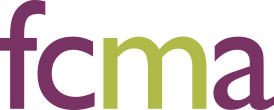Feldenkrais and Resilience
Cliff Smyth, GCFT
There is a lot of talk these days about resilience - the ability to bounce back from challenges, and return to a more balanced and calm state. Moshe Feldenkrais, the creator of the Feldenkrais Method, was interested in finding ways to give people some kind of experience of abstract ideas, like 'resilience'. There are many things that can be thought of as part of a sense of resilience and can also be felt in our movement and physical organization. They can be experienced in Feldenkrais Awareness Through Movement lessons - and in life.
Balance
Balance is a physical experience of being able to stand up, but also to deal with challenges to our balance. Even in a simple activity like walking, we move ourselves off balance and fall forward for a moment until we catch ourselves with the leg swinging forward. Thinking metaphorically, in the rest of life, balance is not being rigid, but being able to catch ourselves, support and steady ourselves and move on. In fact physical rigidity makes us more vulnerable to falls, and many thinkers would suggest emotional fixity does the same.
'Acture'
Moshe Feldenkrais coined this term, related to the idea of having a sense of neutral, of relaxed readiness for action. For Feldenkrais, 'acture' (as compared with the fixed idea of 'posture') is the ability to move in any direction from where we are without any additional preparation for action. In life in general, this would include the ability to respond appropriately to whatever challenges come into our lives without being moved completely out of balance. We can develop the ability to respond in various ways: to be able to go in different directions as needed, and with the right amount of effort. Some things in life take some effort and force, but using more force than necessary can be injurious to ourselves or others.
Support
In Feldenkrais Awareness Through Movement lessons one of the things we explore is how to use support from the environment (usually the floor, sometimes a chair or the wall) to facilitate effective movement. In the rest of life too, we need to take support from our environment - our friends, family, groups, professionals, books, ideas - to deal with challenges. In Awareness Through Movement lessons we can develop the sense of how our skeleton supports us - and how this can provide a deep sense of support that we can access to help us deal with life challenges.
Sense of neutral
The idea here is of a sense in the body of minimal strain, where the muscles and joints are not at their extremes. It is feeling where you could notice any increase in demand on your system. Not all demands are 'bad'. In some ways an in-breath and a heart beat are a demand on your body, and yet without them there is no life. Hans Selye, the original researcher into 'stress', talked about 'good' stress as 'eustress' and too much damaging, stress as 'distress'. Being able to find a greater sense of neutrality on a bodily level can help you feel when you are distressed, when a demand is too much for your system and has triggered an extreme, or not productive, reaction - rather than an appropriate response. Neutral in this sense is not emotionally blank or disengaged, but having a sense of a comfortable 'home' in the body to return to and be able to respond appropriately to a new demand.
Health
Moshe Feldenkrais saw health not as the absence of disease, but that health was more akin to maturity. He proposed that health, on one level, is the ability to recover from illness and injury - our resiliency. On a further level, he felt that a healthy person was able to realize their 'avowed dreams' (their plans, hopes and visions for themselves) and their 'unavowed dreams' (the things we don't dare to dream, dreams we have given up and our potential). A healthy person is able to bounce back, to recover physically, emotionally, in all ways - and continue to move toward their aims in life. Feldenkrais Method can help give you a direct sense of that ability to improve from wherever you start.
An outcome of doing Awareness Through Movement lessons can be gaining a sense of how, through your own actions, you can feel more comfortable, relaxed, poised, stronger and more aware of yourself. You come to experience a greater sense of resilience.
Cliff Smyth, 2010
Thanks to my Feldenkrais and coaching colleague Sarah Kowalski for the collaboration on developing these ideas.
